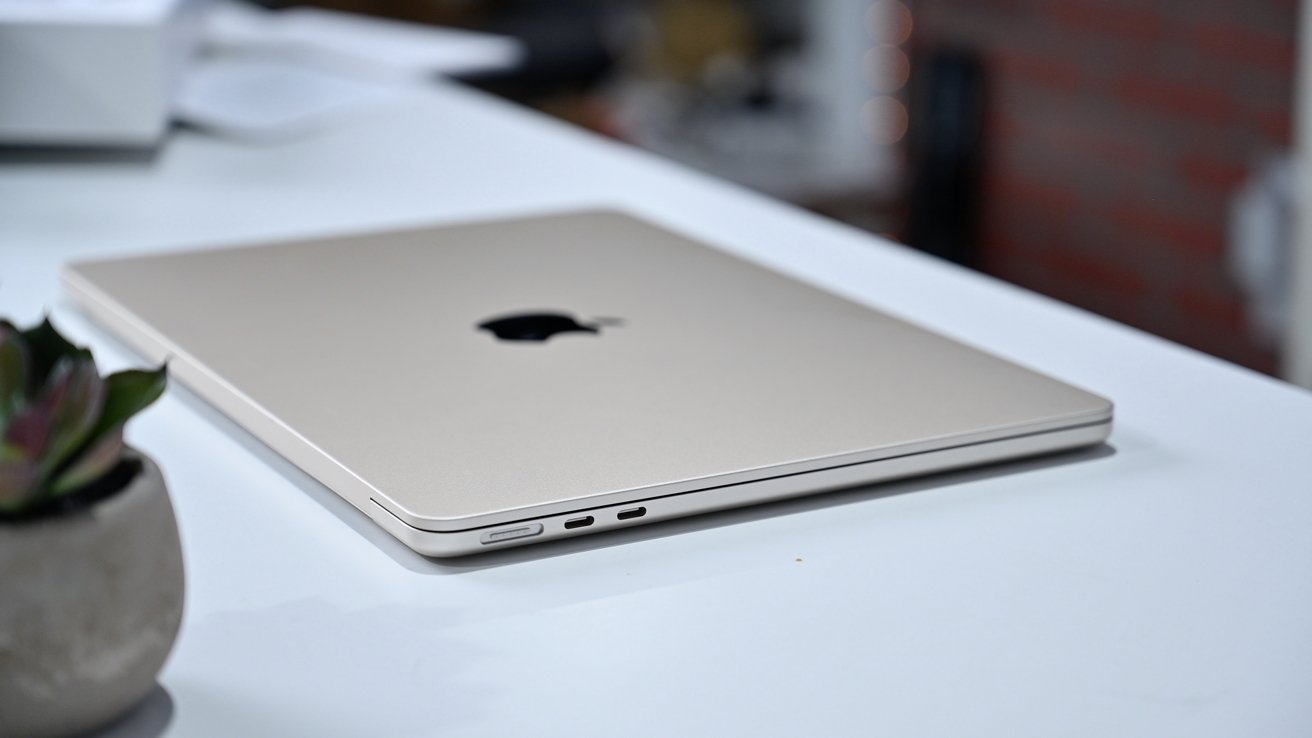M3 MacBook Air models may not arrive in October after all
Without any context, analyst Ming-Chi Kuo has declared that there may not be a M3 MacBook Air launch in October -- or at all in 2023.

The 2022 MacBook Air
The post on X is simple. All it says is, "It seems that Apple will not launch new MacBook models (equipped with M3 series processors) before the end of this year."
There's nothing to support the prediction, and Kuo gave no other indications in this post or any other. The rumor is the first of its kind, with the conventional wisdom suggesting that October was a likely debut time frame, perhaps in a press release rather than an event.
The M2 13-inch MacBook Air debuted on July 15, 2022. However, the M2 15-inch MacBook Air hit the shelves just after the 2023 WWDC.
As far as M1 to M2 goes, the M1 MacBook Air debuted in November 2020, with a 20-month gap between M1 and M2 models. October will mark 15 months from the M2 MacBook Air debut.
On August 27, Bloomberg's Mark Gurman said something contradictory to Kuo's Friday report.
"The structure of the event, I'm told, will match the iPhone 14 launch: A prerecorded video will be shown online, as well as at an event at the company's headquarters," Gurman wrote. "There's also another launch occurring in October -- likely for the first M3 Macs -- but it's unclear if that will be positioned as a formal event."
A press release debut of new M3 Macs isn't unprecedented. The M2 MacBook Pro, and the M2 Mac mini models didn't have an event. And, historically, most Intel MacBook Pro and iMac spec bumps after a new chassis debuted hit the street after a press release.
Apple tends to make the 13-inch MacBook Pro, the 13-inch MacBook Air, and the Mac mini the first models to ship in a chip generation, and they are still good candidates this time around. The M2 Mac mini was released in January 2023 and at this point is well less than a year old.
Rumor Score: Possible
Read on AppleInsider

Comments
A M2 iMac in October wouldn't surprise me though.
tsmc has been producing 90,000 - 100,000 wafers per month for a while now, so that’s going to be around 50,000,000 or more 3nm SOCs per month.
My guess is that N3 (N3B) was too Apple-specific, and so not flexible enough for other customers. Thus, N3E was born, postponing at least one of the ambitious changes that Apple used for A17. N3 is in high-volume production, but only for Apple.
If I had to bet, I’d bet on M3 also being on N3. I think the rumor that they are switching to N3E is exactly that, a rumor. The two lines will merge in N2. The mysterious N3S may be a limited, second generation N3B (also Apple-only), used for A18. A19 and M4 will be on N2.
The iMac, however, is overdue for an upgrade, so I could see that being the first machine to get a base M3. It's curious to me that Apple never bothered to even bump it to the M2, not that the performance difference would have been significant, but it couldn't have hurt for marketing purposes.
The recent budget, kid-friendly MacBook rumor could also do this, start with M1, but configurable with M2.
https://www.theregister.com/2023/09/08/tsmc_ai_chip_crunch/?utm_source=daily&utm_medium=newsletter&utm_content=article
I don't think that this is having any effect on Apple M2/M3 production, which requires interconnects to scale up, or we would have heard about it.
https://pr.tsmc.com/english/news/3033
I don’t think Apple uses CoWoS, at least not in any current or expected products.
A January upgrade (7 months) would be better for current 15" buyers, even if it extends the 13" upgrade cycle.
It's disappointing as it would have been good to see what's coming with M3 before Christmas, all we have to go on until then is the A17 chip.
This also means that M3 Pro/Max might not arrive until Summer/WWDC 24.